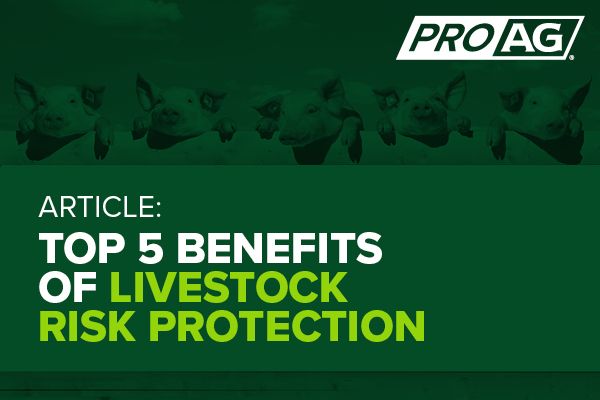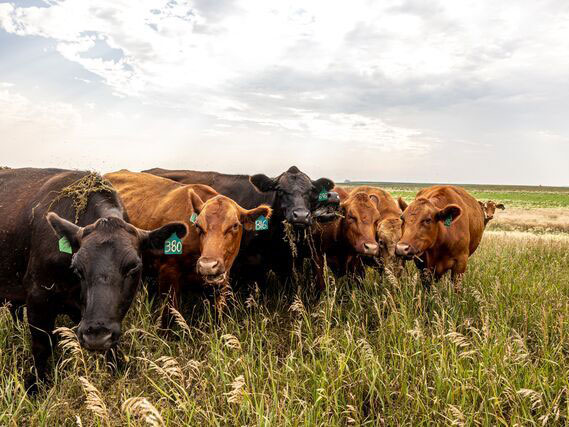Raise Your Expertise with Bagley Risk Management
Raise Your Expertise with Bagley Risk Management
Blog Article
Understanding Livestock Risk Security (LRP) Insurance Coverage: A Comprehensive Guide
Browsing the realm of animals danger defense (LRP) insurance policy can be an intricate venture for many in the agricultural market. From how LRP insurance policy operates to the various coverage choices available, there is much to discover in this extensive guide that might potentially shape the way livestock manufacturers come close to threat administration in their businesses.

Exactly How LRP Insurance Functions
Periodically, recognizing the mechanics of Livestock Risk Defense (LRP) insurance coverage can be intricate, yet breaking down exactly how it works can supply quality for farmers and ranchers. LRP insurance coverage is a danger administration tool made to shield animals manufacturers versus unforeseen price declines. The policy permits manufacturers to establish a coverage level based on their particular needs, picking the variety of head, weight array, and insurance coverage rate. As soon as the policy remains in place, if market value fall listed below the insurance coverage cost, producers can sue for the difference. It is necessary to note that LRP insurance coverage is not a profits warranty; rather, it concentrates solely on price risk protection. The insurance coverage duration usually varies from 13 to 52 weeks, providing adaptability for producers to select a period that lines up with their production cycle. By making use of LRP insurance, ranchers and farmers can reduce the economic dangers related to varying market value, guaranteeing better security in their procedures.
Eligibility and Coverage Options

When it comes to protection alternatives, LRP insurance policy supplies manufacturers the flexibility to pick the coverage level, coverage period, and recommendations that ideal suit their danger administration requirements. By recognizing the qualification criteria and coverage alternatives available, livestock manufacturers can make informed decisions to take care of danger properly.
Advantages And Disadvantages of LRP Insurance Policy
When reviewing Animals Threat Security (LRP) insurance coverage, it is vital for animals producers to evaluate the benefits and negative aspects intrinsic in this danger administration tool.

One of the primary benefits of LRP insurance policy is its capability to offer protection versus a decrease in animals prices. This can aid guard manufacturers from economic losses resulting from market fluctuations. Additionally, LRP insurance provides a degree of flexibility, enabling producers to tailor coverage levels and plan durations to suit their specific demands. By securing an ensured cost for their livestock, producers can better handle risk and prepare for the future.
One restriction of LRP insurance policy is that it does not protect against all types of dangers, such as condition break outs or all-natural calamities. It is crucial for producers to meticulously analyze their individual danger exposure and monetary scenario to figure out if LRP insurance is the appropriate danger management device why not try this out for their procedure.
Understanding LRP Insurance Coverage Premiums

Tips for Taking Full Advantage Of LRP Conveniences
Taking full advantage of the benefits of Livestock Danger Protection (LRP) insurance policy requires calculated planning and proactive risk management - Bagley Risk Management. To maximize your LRP coverage, take into consideration the adhering to tips:
Consistently Analyze Market Conditions: Keep notified regarding market fads and price changes in the livestock sector. By monitoring these elements, you can make informed choices regarding when to purchase LRP coverage to safeguard versus prospective losses.
Establish Realistic resource Insurance Coverage Degrees: When selecting coverage levels, consider your manufacturing prices, market price of livestock, and potential risks - Bagley Risk Management. Setting reasonable protection levels makes sure that you are adequately secured without paying too much for unnecessary insurance
Diversify Your Coverage: Instead of depending entirely on LRP insurance, take into consideration diversifying your danger monitoring methods. Integrating LRP with other risk management tools such read here as futures contracts or alternatives can supply thorough protection against market unpredictabilities.
Testimonial and Change Coverage Regularly: As market problems change, occasionally examine your LRP coverage to guarantee it lines up with your current danger direct exposure. Readjusting protection degrees and timing of purchases can help maximize your danger defense method. By adhering to these ideas, you can make the most of the advantages of LRP insurance coverage and safeguard your animals operation against unexpected risks.
Verdict
To conclude, animals risk protection (LRP) insurance is a beneficial tool for farmers to manage the economic dangers connected with their animals procedures. By comprehending how LRP functions, qualification and insurance coverage alternatives, as well as the advantages and disadvantages of this insurance, farmers can make educated choices to protect their source of incomes. By carefully thinking about LRP costs and applying techniques to maximize advantages, farmers can minimize potential losses and guarantee the sustainability of their operations.
Animals manufacturers interested in obtaining Animals Risk Security (LRP) insurance coverage can check out an array of qualification criteria and protection alternatives tailored to their particular livestock operations.When it comes to insurance coverage alternatives, LRP insurance offers producers the flexibility to pick the insurance coverage level, coverage duration, and recommendations that ideal match their threat monitoring requirements.To realize the complexities of Livestock Risk Defense (LRP) insurance coverage completely, comprehending the aspects influencing LRP insurance coverage costs is crucial. LRP insurance policy premiums are established by numerous aspects, including the protection level picked, the expected cost of livestock at the end of the coverage duration, the type of livestock being guaranteed, and the size of the protection period.Review and Readjust Protection On a regular basis: As market problems change, occasionally assess your LRP insurance coverage to ensure it aligns with your existing danger exposure.
Report this page